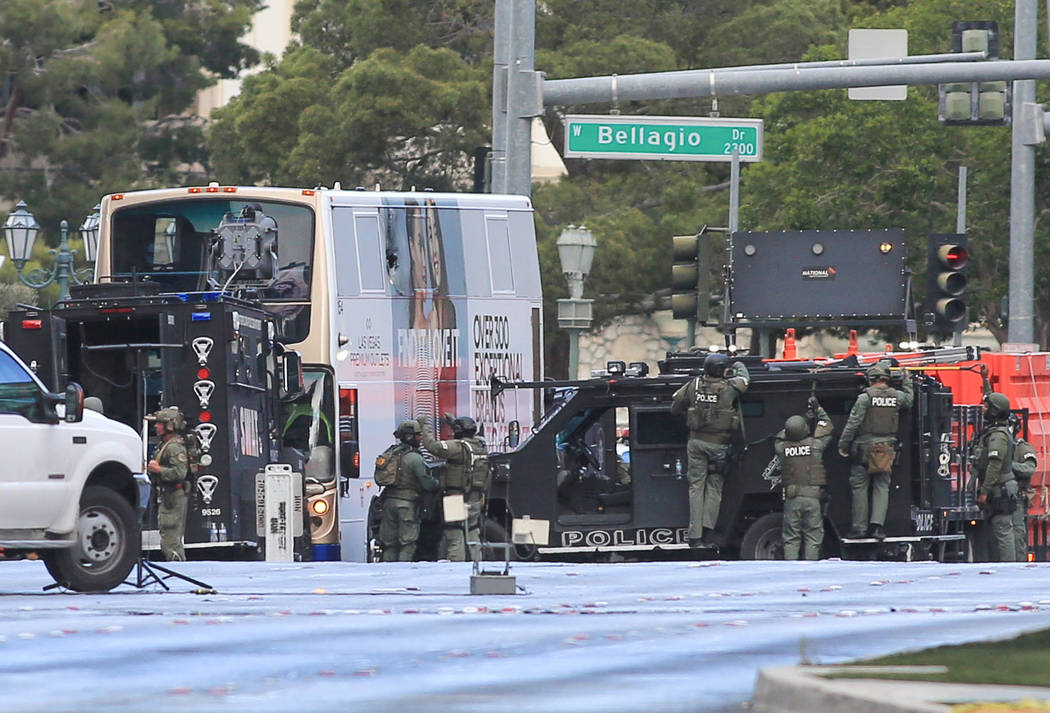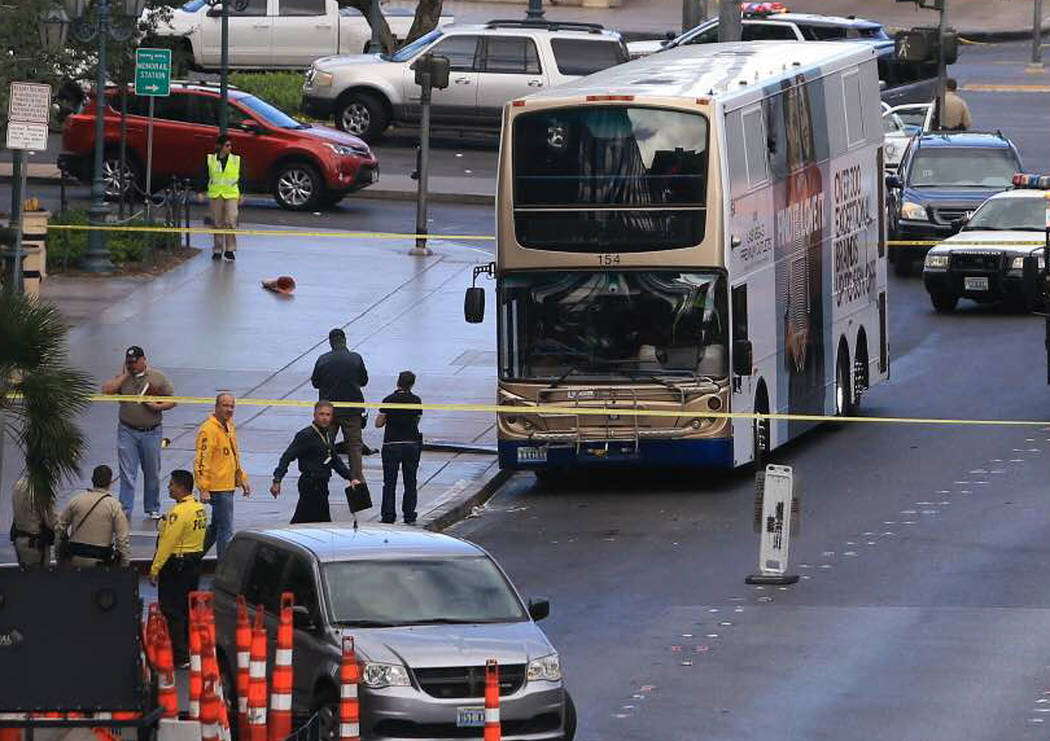Las Vegas police operated blind in standoff on Strip due to giant bus ads
Shortly after a gunman barricaded himself inside a bus along the Strip last Saturday, the Metroplitan Police Department tapped an unexpected source for backup: the Regional Transportation Commission of Southern Nevada.
Officials with the RTC said they received a call from officers who could not see the suspect because the windows were blocked by a vinyl advertisement wrapped around the bus.
The situation has since prompted the agency to review policies for the giant ads and the use of cameras mounted inside buses, RTC spokeswoman Angela Castro said.
The suspect, later identified as 55-year-old Rolando Cardenas, could see outside the shaded windows of the double-decked Deuce bus parked in front of The Cosmopolitan hotel-casino, Metro police officers told the RTC during the standoff.
At the same time, SWAT officers couldn’t see what Cardenas was doing as he remained inside the bus for more than four hours, halting traffic along the Strip.
That was when police asked for access to an on-board surveillance camera in an attempt to watch a live-stream video of Cardenas, Castro said. The tactic didn’t work because cameras on all RTC buses are not equipped for real-time feeds, and only record images that may be viewed at a later time.
About three hours into the standoff, police used a flash-bang to break the windows and placed a robot inside the bus. The robot confirmed the shooter was still inside. Cardenas then tossed the robot outside the bus and remained barricaded until he was arrested without incident.
POLICY CHANGE
“Based on the shooting on the Las Vegas Strip, we are currently working with law enforcement and our transit contractors to hopefully resolve the issues that reduced law enforcement’s ability to see inside the bus,” Castro said.
Moving forward, Castro said the RTC is studying whether real-time video feeds can be provided to police during an emergency. The agency, which spends $8 million annually on security, is also looking for an alternative material that will allow for better visibility for buses wrapped in giant advertisements.
Metropolitan Police Department officer Larry Hadfield said he would not “confirm or deny” the RTC’s account. He declined to comment on the RTC’s policy review of on-board cameras and wrap-around bus advertisements.
Hadfield also declined to say whether the standoff would have ended earlier if police had a clearer view of Cardenas, who is accused of fatally shooting Gary Breitling, 57, of Sidney, Montana, and wounding another man on the bus.
“There were issues, but our officers deal with issues they run into, whether it’s a brick wall or a glass window,” Hadfield said.
BUS ADVERTISEMENTS
Giant advertisements for local hotels and shows have wrapped around Strip buses since 2005, coinciding with the launch of the popular Deuce line as a way to generate revenue for the RTC and subsidize residential routes, Castro said.
The vinyl ads generate up to $2 million annually — enough to cover about 2 percent of the RTC’s service costs, or the equivalent of operating a smaller bus line elsewhere in the Las Vegas Valley, Castro said.
The Deuce, combined with the RTC’s Strip & Downtown Express, generate up to $9 million in profit annually and remain one of the most profitable routes in the U.S.
“The safety and security of our transit riders, contractors and staff is our utmost priority,” Castro said. “We remain committed to providing a safe and reliable transit service.”
Contact Art Marroquin at amarroquin@reviewjournal.com or 702-383-0336. Find @AMarroquin_LV on Twitter.
RELATED
Suspect in Las Vegas Strip bus shooting makes 1st court appearance
Suspect charged, victim identified in Las Vegas Strip bus shooting
1 dies in fatal bus shooting on Las Vegas Strip, hours after Bellagio burglary





























